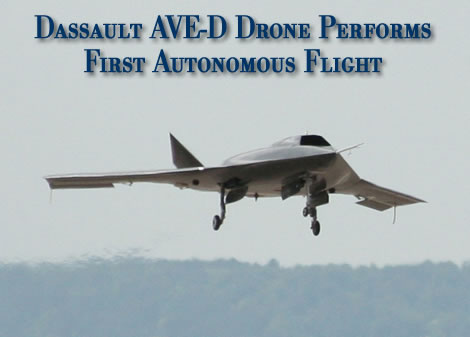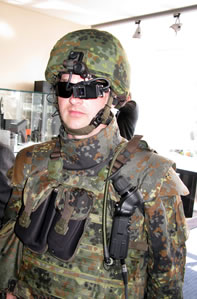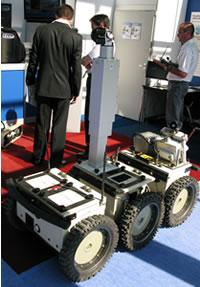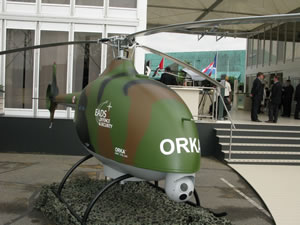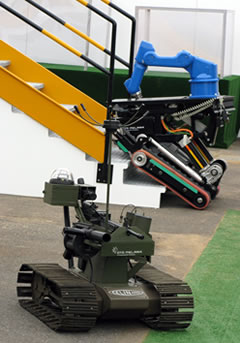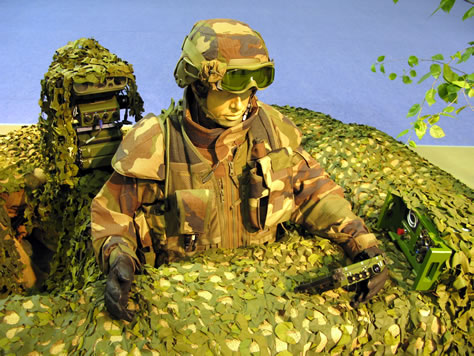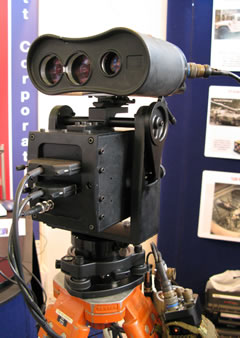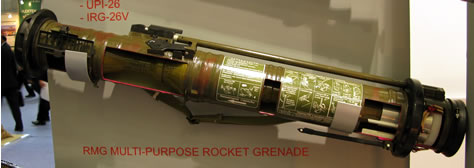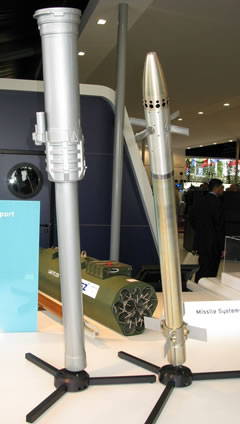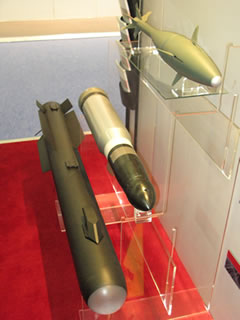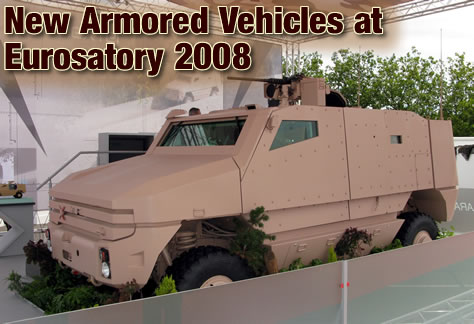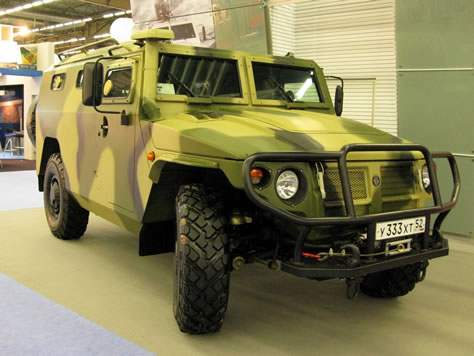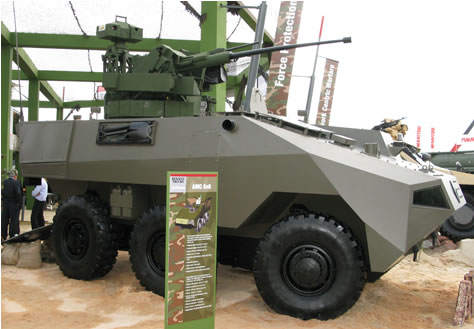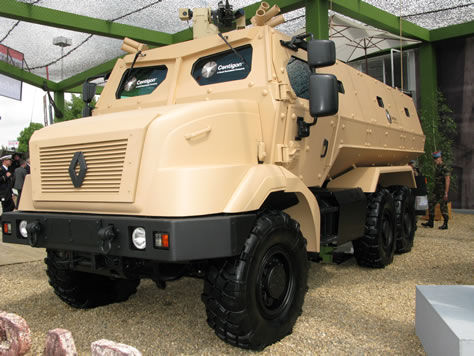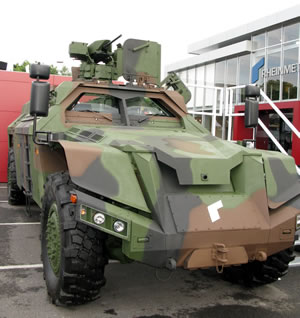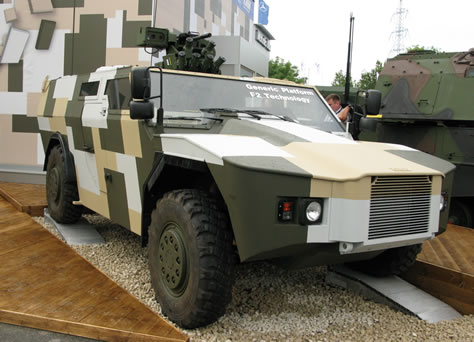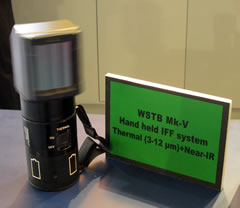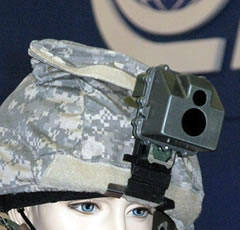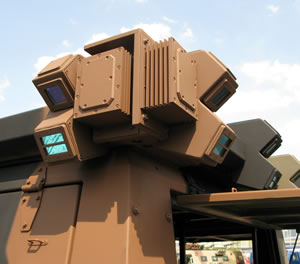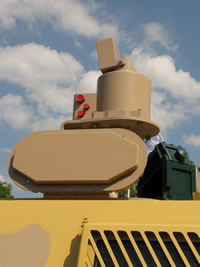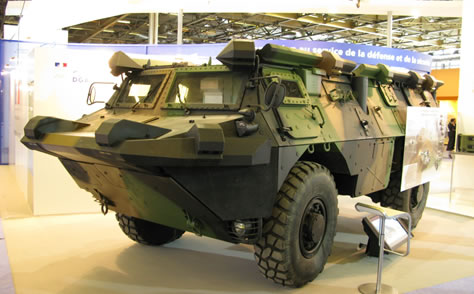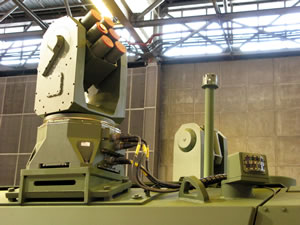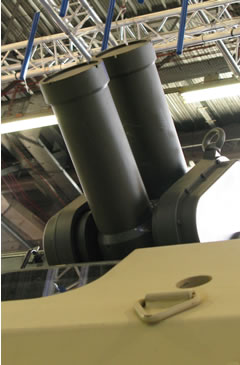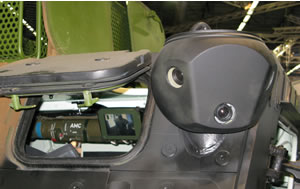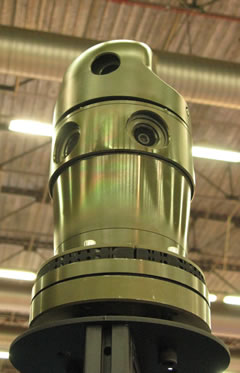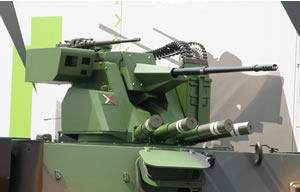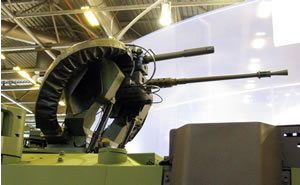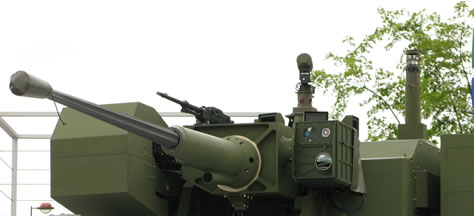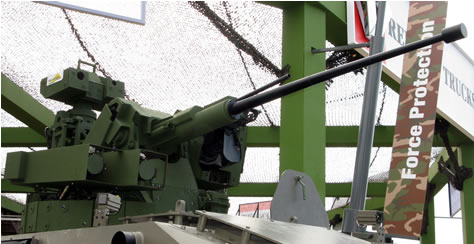The big question posed these days, is not whether Israel is capable of taking out Mahmoud Ahmadinejad’s nukes, but if it should go ahead and does so- alone. Irresponsible ‘fairy tales’ of alleged Israeli ‘secret’ preparations to ‘go-it-alone’ against Iranian nukes, already paint vivid scenarios of massive, devastating air strikes, a full dose of ‘shock and awe’ with hundreds of bunker-busting bombs slicing through concrete, at more than a dozen nuclear sites across Iran. Much of this seems sheer nonsense, if not even criminal saber rattling, which leads nowhere but to further escalating tension. Although such air strikes don’t seem imminent, they seem to crop up from time to time in persistent fervor of pseudo-analysts.
But analysts mention, that the admiral’s second, quite unprecedented visit to Israel in six months, would certainly fuel speculation about possible Israeli military action against Iran. Moreover, several media reports had whispered, that Admiral Mullen’s last visit in December 2007, included secret discussions over Israel’s alleged attack on Syria’s nuclear site, last September.Among the latest, were last week’s news reports, saying that Israel conducted a massive military exercise in plain sight, to send signals to the United States, European and especially Tehran, that Israel was prepared to launch a massive military strike against targets across Iran, if diplomatic efforts to halt or delay its nuclear program failed. This started a series of new rumors, which increased even further, over the surprising announcement, that a delegation of senior officers, headed by US Joint Chiefs of Staff chairman Admiral Michael Mullen will meet Israeli Defense chief, General Gabi Ashkenazi in Tel Aviv. A few weeks after Mullen’s visit, Ashkenazi is scheduled to fly to Washington DC for several days, on his first visit to the US as chief of staff. Normally, such visits are kept in low-profile, so as to avoid unnecessary speculation over their objective.
If all this was not enough to arouse the simmering tension, the outspoken, former US ambassador John Bolton warned, that the US and Israel could attack Iraq’s fledgling program between the time a new president was nominated in November and the date the incumbent, George W. Bush, left office in January 2009. Bolton, well known for hawkish stance on Iran throughout his tenure as ambassador to the UN, claims that he thought Israel would even act unilaterally in any military strike, because the US has lost enthusiasm to do so, during the last months of the Bush regime.
All this though rhetoric should have sent jitters in Tehran, which has indeed retaliated with equal defiance talk. Mohammad Hejazi, a top commander of the Iranian Revolutionary Guards warned, that any attack on Iran would draw the U.S. into “a new tragedy.” The commander of Iran’s Islamic Revolution Guards Corps Major General Mohammad Ali Jafari warned that his troops would counter any attack against the country. Iranian Defense Minister Mostafa Mohammad Najar Sunday cautioned on a “limitless” response to any military strike, but considering reported Israel’s drill in the eastern Mediterranean and Greece as mere “psychological operations”. However, reports from Tehran indicated that the Revolutionary Guards had been placed on high alert, deploying some of its latest air defenses around key installations, which they expect becoming primary targets for attack.
Iranian Defense Minister Mostafa Mohammad Najjar emphasized, last December, that under a recent military cooperation between Moscow and Tehran, an undisclosed number of highly sophisticated S-300 air defense systems will be delivered to Iran, on the basis of a contract signed with Russia in the past. Earlier reports said that Russia had delivered all 29 Tor-M1 ordered by Iran under a US$700 million contract signed in December 2005. Although, as usual, Russian officials refused to comment on the Iranian statement, rumors about this sale have persisted over a long time with Russian officials being consistently in denial. Undoubtedly, if Iran will have S-300s in its possession, these missiles could pose significant threat to attackers, whether U.S. or Israeli, if ordered to attack targets in Iran.
Enhanced rumours over a possible air strike on Iran’s nuclear infrastructure, increased in Israel recently, when news over confirmed, that Mossad director, retired Major General Meir Dagan’s term, would be extended until end 2009. Dagan, already six years on this job, has proved his covert mettle in a variety of counter-terror operations. Dagan was charged by former PM Ariel Sharon to monitor and concentrate top priority intelligence gathering on Iran’s nukes program.
Unconfirmed reports, indicated Dagan’s highly successful intelligence coup, was leading up to the demolition of Syria’s North Korean plutonium reactor in al Kebir last September, which Israel stubbornly refuses to confirm, in spite of ‘leaks’ by some of its senior politicians. It was not until April 2008, seven months after the dramatic event, that the US Central Intelligence Agency released news of the operation in Washington, providing graphics attesting to the penetration of the of the most secret and well-protected facility in Syria. US based sources hinted that a major coup was achieved not so much by destroying a suspected nuclear facility, but actually testing the new Russian-built air defense systems, allegedly deployed in that area. Moreover, as a strategic by-product, the supposed ( but never confirmed) flight-route, over Syrian airspace, actually brought Israeli jets close to the Iraqi border, and a virtual “stone-throw” towards Iranian skies, without being challenged.
Whether Israel should opt for a military strike on Iran’s nuclear facilities is under a highly controversial debate in the public debate. There are those who persist in an aggressive attitude, to act, before Iran poses, what they consider, an existential threat to Israel’s very survival. Others are more cautious in their approach, although they are fully aware over what is in stake, if the “bad guys” in Tehran will clutch the “doomsday” weapon in their claws. Still, many veteran soldiers, who have seen it all, under realistic warfare scenarios, are under little illusion as to what a price of “going it alone”, will pose on Israel’s, certainly impressive, but still limited resources. Under consideration are foremost, not least, the challenges of the long-distance ranges involved to-and-from potential targets, faced by mission strike packages.
Assuming that a military strike is issued, Israel cannot hope to destroy Iran’s entire nuclear infrastructure. Facilities are widely distributed across the vast country and there are too many sites to be addressed. To have a reasonable chance of success, both in the mission and in the ultimate goal of rendering Iran’s nuclear program impotent, the target-set must be narrowed to the critical nodes in Iran’s nuclear infrastructure. Most experts agree that the most difficult part of nuclear weapons development is obtaining the nuclear material itself; thus, if the means of fissile material production can be destroyed, the setback for Iran will be maximized. According to published intelligence assessments, Iran’s nuclear complex has three critical nodes: Esfahan, with its conversion facility, the Natanz enrichment facility, and the heavy water plant and future plutonium production reactors at Arak.
Can Israel Destroy Iran’s Nuclear thrust?
Israel has twice launched pre-emptive air strikes ostensibly to cripple Mid-East Arab nuclear programs. In both instances, against Iraq in 1981 and Syria in September 2007, the targeted regimes howled but did nothing. But effectively destroying Iran’s widely scattered and deeply buried nuclear facilities would be quite a different ballgame.
The primary objective of any such action should be to halt or substantially delay Iran’s completion of its nuclear project for several years, hoping that a more moderate regime will emerge, willing to regain its place in the free world. The military assessment is, however, that any attack will be extremely complex, require extensive coordination and real-time intelligence, before, through and immediately after each attack, performing ad-hoc bomb damage assessment to ensure successful execution of such strikes. In addition to the geographical dispersion of the targets, each of these nuclear facilities is buried deeply underground. Therefore, a successful attack should involve at least three or four simultaneous strikes, totally destroying those underground targets – anything less will be regarded failure to achieve mission success.
Should Israel do this alone?
The Israel Air Force is well equipped, trained to carry out operations at great distances from the Israeli border and has demonstrated such capabilities in the past. However, the geographic and geopolitical situation poses a great challenge and limits the Israeli operational flexibility in planning, executing and succeeding to perform such a mission. Overcoming the distance to these targets, egress and ingress routes poses a complex challenge, dependent on local political conditions, including the strategic posture of the US in the region, especially with the Arab Sunni leadership. In-flight refueling could be provided only through part of the route, while combat rescue further complicate planning, since such activities are unplanned and depend on favorable conditions on the ground. Such complex, difficult and sensitive operational considerations will challenge both the Israeli military and political leadership to the utmost. On the other side, the fact that the Iranians know which sites enables them to concentrate their defenses without spreading their air defenses and air force too thin. This means that the Israelis could have one chance to succeed, as their airpower will be stretched to its limits, and could not carry out recurring strikes, based on accurate bomb damage assessment (BDA).
Alternatively, a US led air campaign does not have to be contained to 3-4 sites as they are able to hit more than 1,500 aim points, many of them simultaneously. Their weapons arsenal is more capable, especially against deep-buried underground targets, including stand-off, the 28,000-pound bunker busters, 5,000-pound and 2,000 bunker penetrators that could effectively strike underground protected targets and stealthy air-launched cruise missiles such as the JASSM. Strike weapons could be deployed by tactical airpower like the F/A-18E/F and F-15E or strategic stealth bombers such as the B-2, which can simultaneously attack 80 different targets. Planning flight routes for US airpower is more direct, and encounters less opposition among regional countries, particularly with strategic bombers and aircraft carrier based naval air power.
Any military action against Iran would most probably, unite the Iranian people behind their regime, even if this is not too popular, due to Iran’s economic and social decline. Moreover, Iran’s ability to retaliate must be taken seriously. This comprises three primary components: missile attacks, rocket attacks from Iranian sponsored Hezbollah and attacks on Israeli interests overseas.
The Iranians could retaliate by launching Shahab-3 ballistic missiles. These weapons could hit large population centers in Israel but the missiles could also target Israel’s nuclear facilities. The second option was demonstrated in 2006, as Hezbollah fired its medium rocket arsenal targeting major Israeli cities. A massive rocket offensive can cause severe problems to Israel’s rear, which is still improperly protected, until the new counter-rocket and C-Ram defenses become available.
It seems inevitable, that the Tehran Ayathollah’s must be stopped, one way or another, before the world enters into total disarray and uncontrollable chaos, threatened by a nuclear tipped Islamic fundamentalist rogue nation. Time is critical, but Israel must not be left alone to face the consequences looming on the threshold of the free world.
Endnote;
This analysis does not intend to assess detailed data for a potential air strike on Iran’s nuclear infrastructure. Top-secret analyses from intelligence agencies normally reply to such a question, whether positive or negative-depending on their origin. However talented outsiders, using open sources, can also try their hand in this delicate assessment speculation game. Two professionally qualified scholars, Whitney Raas and Austin Long have studied this problem at the Massachusetts Institute of Technology and published their impressive analysis, titled Ozirak Redux? Assessing Israeli Capabilities to Destroy Iranian Nuclear Facilities“, in the journal International Security April 2006.

